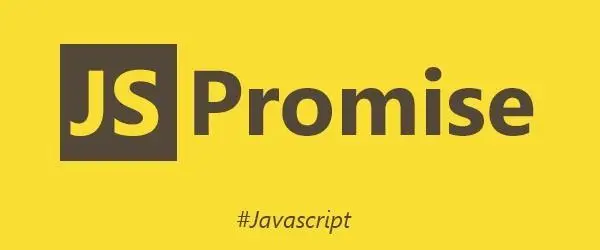1805 字
9 分钟
手写Promise
TIP这篇文章主要整理如何自己实现Promise,详细介绍和用法已经有很多比较好的文档了,就不在此整理了
1. Promise声明🍒
class MyPromise {
// 构造器
constructor(executor) {
// 成功
let resolve = () => {};
// 失败
let reject = () => {};
// 立即执行
executor(resolve,reject);
}
}
2. 定义基本状态🍒
class MyPromise {
// 构造器
constructor(executor) {
// 初始化state为pending
this.state = 'pending';
// 成功的值
this.value = undefined;
// 失败的值
this.reason = undefined;
let resolve = value => {
if(this.state === 'pending'){
this.state = 'fulfilled';
this.value = value;
}
}
let reject = reason => {
if(this.state === 'pending'){
this.state = 'rejected';
this.reason = reason;
}
}
try {
executor(resolve,reject)
} catch (error) {
reject(error)
}
}
}
3. 定义then()方法🍒
class MyPromise {
constructor(executor) {...}
then(onFulfilled,onRejected) {
if(this.state === 'fulfilled'){
onFulfilled(this.value);
}
if(this.state === 'rejected'){
onRejected(this.reason);
}
}
}
4. 实现异步🍒
如果是异步操作,执行then时state还是pending等待状态,所以需要在then调用时,将成功和失败存到各自的数组,一旦resolve或reject就调用他们
class MyPromise{
constructor(executor){
this.state = 'pending';
this.value = undefined;
this.reason = undefined;
// 成功存放的数组
this.onResolvedCallbacks = [];
// 失败存放法数组
this.onRejectedCallbacks = [];
let resolve = value => {
if (this.state === 'pending') {
this.state = 'fulfilled';
this.value = value;
// 一旦resolve执行,调用成功数组的函数
this.onResolvedCallbacks.forEach(fn=>fn());
}
};
let reject = reason => {
if (this.state === 'pending') {
this.state = 'rejected';
this.reason = reason;
// 一旦reject执行,调用失败数组的函数
this.onRejectedCallbacks.forEach(fn=>fn());
}
};
try{
executor(resolve, reject);
} catch (err) {
reject(err);
}
}
then(onFulfilled,onRejected) {
if (this.state === 'fulfilled') {
onFulfilled(this.value);
};
if (this.state === 'rejected') {
onRejected(this.reason);
};
// 当状态state为pending时
if (this.state === 'pending') {
// onFulfilled传入到成功数组
this.onResolvedCallbacks.push(()=>{
onFulfilled(this.value);
})
// onRejected传入到失败数组
this.onRejectedCallbacks.push(()=>{
onRejected(this.reason);
})
}
}
}
5. 实现链式调用🍒
为了避免
回调地狱,我们常常用到new Promise().then().then(),也就是链式调用
这里的
resolvePromise()方法用来判断x(即第一个then的返回值)
class MyPromise{
constructor(executor){
this.state = 'pending';
this.value = undefined;
this.reason = undefined;
this.onResolvedCallbacks = [];
this.onRejectedCallbacks = [];
let resolve = value => {
if (this.state === 'pending') {
this.state = 'fulfilled';
this.value = value;
this.onResolvedCallbacks.forEach(fn=>fn());
}
};
let reject = reason => {
if (this.state === 'pending') {
this.state = 'rejected';
this.reason = reason;
this.onRejectedCallbacks.forEach(fn=>fn());
}
};
try{
executor(resolve, reject);
} catch (err) {
reject(err);
}
}
then(onFulfilled,onRejected) {
// 声明返回的promise2
let promise2 = new Promise((resolve, reject)=>{
if (this.state === 'fulfilled') {
let x = onFulfilled(this.value);
// resolvePromise函数,处理自己return的promise和默认的promise2的关系
resolvePromise(promise2, x, resolve, reject);
};
if (this.state === 'rejected') {
let x = onRejected(this.reason);
resolvePromise(promise2, x, resolve, reject);
};
if (this.state === 'pending') {
this.onResolvedCallbacks.push(()=>{
let x = onFulfilled(this.value);
resolvePromise(promise2, x, resolve, reject);
})
this.onRejectedCallbacks.push(()=>{
let x = onRejected(this.reason);
resolvePromise(promise2, x, resolve, reject);
})
}
});
// 返回promise,完成链式
return promise2;
}
}
6. 实现 resolvePromise函数🍒
6.1 循环引用的错误
如果判断
x === promise2,那么就会造成循环引用,也就是自己等待自己完成
let p1 = new Promise(resolve => {
resolve(0);
});
var p2 = p1.then(data => {
// 循环引用,自己等待自己完成,永远无法完成
return p2;
})
6.2 完成 resolvePromise方法
// 1. 判断x是不是promise
// 1.1 如果是promise,则取它的结果作为新的promise2成功的结果
// 1.2 如果是普通值,就直接作为promise2成功的结果
function resolvePromise(promise2, x, resolve, reject){
// 循环引用报错!
if(x === promise2){
// reject报错
return reject(new TypeError('Chaining cycle detected for promise'));
}
// 定义一个标识,防止多次调用
let called;
// x不是null 且x是对象或者函数
if (x != null && (typeof x === 'object' || typeof x === 'function')) {
try {
// A+规定,声明then = x的then方法
let then = x.then;
// 如果then是函数,就默认x是promise了
if (typeof then === 'function') {
// 就让then执行 第一个参数是this 后面是成功的回调 和 失败的回调
then.call(x, y => {
// 成功和失败只能调用一个
if (called) return;
called = true;
// resolve的结果依旧是promise 那就继续解析
resolvePromise(promise2, y, resolve, reject);
}, err => {
// 成功和失败只能调用一个
if (called) return;
called = true;
reject(err);// 失败了就失败了
})
} else {
resolve(x); // 直接成功即可
}
} catch (e) {
// 也属于失败
if (called) return;
called = true;
// 取then出错了那就不要在继续执行了
reject(e);
}
} else {
resolve(x);
}
}
7. 解决其他问题🍒
按规定,onFulfilled,onRejected都是可选参数,如果他们不是函数,必须被忽略
并且onFulfilled或onRejected不能同步被调用,必须异步调用
class MyPromise {
constructor(executor){...}
then(onFulfilled,onRejected) {
// onFulfilled如果不是函数,就忽略onFulfilled,直接返回value
onFulfilled = typeof onFulfilled === 'function' ? onFulfilled : value => value;
// onRejected如果不是函数,就忽略onRejected,直接扔出错误
onRejected = typeof onRejected === 'function' ? onRejected : err => { throw err };
let promise2 = new Promise((resolve, reject) => {
if (this.state === 'fulfilled') {
// 异步
setTimeout(() => {
try {
let x = onFulfilled(this.value);
resolvePromise(promise2, x, resolve, reject);
} catch (e) {
reject(e);
}
}, 0);
};
if (this.state === 'rejected') {
// 异步
setTimeout(() => {
// 如果报错
try {
let x = onRejected(this.reason);
resolvePromise(promise2, x, resolve, reject);
} catch (e) {
reject(e);
}
}, 0);
};
if (this.state === 'pending') {
this.onResolvedCallbacks.push(() => {
// 异步
setTimeout(() => {
try {
let x = onFulfilled(this.value);
resolvePromise(promise2, x, resolve, reject);
} catch (e) {
reject(e);
}
}, 0);
});
this.onRejectedCallbacks.push(() => {
// 异步
setTimeout(() => {
try {
let x = onRejected(this.reason);
resolvePromise(promise2, x, resolve, reject);
} catch (e) {
reject(e);
}
}, 0)
});
};
});
// 返回promise,完成链式
return promise2;
}
}
8. 大功告成🍒
class MyPromise{
constructor(executor){
this.state = 'pending';
this.value = undefined;
this.reason = undefined;
this.onResolvedCallbacks = [];
this.onRejectedCallbacks = [];
let resolve = value => {
if (this.state === 'pending') {
this.state = 'fulfilled';
this.value = value;
this.onResolvedCallbacks.forEach(fn=>fn());
}
};
let reject = reason => {
if (this.state === 'pending') {
this.state = 'rejected';
this.reason = reason;
this.onRejectedCallbacks.forEach(fn=>fn());
}
};
try{
executor(resolve, reject);
} catch (err) {
reject(err);
}
}
then(onFulfilled,onRejected) {
onFulfilled = typeof onFulfilled === 'function' ? onFulfilled : value => value;
onRejected = typeof onRejected === 'function' ? onRejected : err => { throw err };
let promise2 = new MyPromise((resolve, reject) => {
if (this.state === 'fulfilled') {
setTimeout(() => {
try {
let x = onFulfilled(this.value);
resolvePromise(promise2, x, resolve, reject);
} catch (e) {
reject(e);
}
}, 0);
};
if (this.state === 'rejected') {
setTimeout(() => {
try {
let x = onRejected(this.reason);
resolvePromise(promise2, x, resolve, reject);
} catch (e) {
reject(e);
}
}, 0);
};
if (this.state === 'pending') {
this.onResolvedCallbacks.push(() => {
setTimeout(() => {
try {
let x = onFulfilled(this.value);
resolvePromise(promise2, x, resolve, reject);
} catch (e) {
reject(e);
}
}, 0);
});
this.onRejectedCallbacks.push(() => {
setTimeout(() => {
try {
let x = onRejected(this.reason);
resolvePromise(promise2, x, resolve, reject);
} catch (e) {
reject(e);
}
}, 0)
});
};
});
return promise2;
}
catch(fn){
return this.then(null,fn);
}
}
function resolvePromise(promise2, x, resolve, reject){
if(x === promise2){
return reject(new TypeError('Chaining cycle detected for promise'));
}
let called;
if (x != null && (typeof x === 'object' || typeof x === 'function')) {
try {
let then = x.then;
if (typeof then === 'function') {
then.call(x, y => {
if(called)return;
called = true;
resolvePromise(promise2, y, resolve, reject);
}, err => {
if(called)return;
called = true;
reject(err);
})
} else {
resolve(x);
}
} catch (e) {
if(called)return;
called = true;
reject(e);
}
} else {
resolve(x);
}
}
//resolve方法
MyPromise.resolve = function(val){
return new Promise((resolve,reject)=>{
resolve(val)
});
}
//reject方法
MyPromise.reject = function(val){
return new Promise((resolve,reject)=>{
reject(val)
});
}
//race方法
MyPromise.race = function(promises){
return new Promise((resolve,reject)=>{
for(let i=0;i<promises.length;i++){
promises[i].then(resolve,reject)
};
})
}
//all方法(获取所有的promise,都执行then,把结果放到数组,一起返回)
MyPromise.all = function(promises){
let arr = [];
let i = 0;
function processData(index,data){
arr[index] = data;
i++;
if(i == promises.length){
resolve(arr);
};
};
return new Promise((resolve,reject)=>{
for(let i=0;i<promises.length;i++){
promises[i].then(data=>{
processData(i,data);
},reject);
};
});
}
9. 测试🍒
- npm安装promises-aplus-tests插件
- 加上下方代码
- 运行 promises-aplus-tests 文件名 验证
// 目前是通过他测试 他会测试一个对象
// 语法糖
MyPromise.defer = MyPromise.deferred = function () {
let dfd = {}
dfd.promise = new MyPromise((resolve,reject)=>{
dfd.resolve = resolve;
dfd.reject = reject;
});
return dfd;
}
module.exports = MyPromise;
//npm install promises-aplus-tests 用来测试自己的promise 符不符合promisesA+规范
TIP如果通过了872个测试点,就大功告成了

